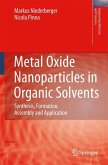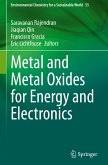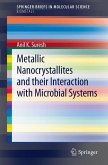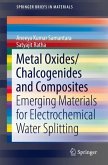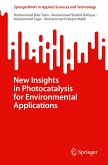Metal Oxide Nanoparticles in Organic Solvents discusses recent advances in the chemistry involved for the controlled synthesis and assembly of metal oxide nanoparticles, the characterizations required by such nanoobjects, and their size and shape depending properties.
In the last few years, a valuable alternative to the well-known aqueous sol-gel processes was developed in the form of nonaqueous solution routes. Metal Oxide Nanoparticles in Organic Solvents reviews and compares surfactant- and solvent-controlled routes, as well as providing an overview of techniques for the characterization of metal oxide nanoparticles, crystallization pathways, the physical properties of metal oxide nanoparticles, their applications in diverse fields of technology, and their assembly into larger nano- and mesostructures.
Researchers and postgraduates in the fields of nanomaterials and sol-gel chemistry will appreciate this book's informative approach to chemical formation mechanisms in relation to metal oxides.
In the last few years, a valuable alternative to the well-known aqueous sol-gel processes was developed in the form of nonaqueous solution routes. Metal Oxide Nanoparticles in Organic Solvents reviews and compares surfactant- and solvent-controlled routes, as well as providing an overview of techniques for the characterization of metal oxide nanoparticles, crystallization pathways, the physical properties of metal oxide nanoparticles, their applications in diverse fields of technology, and their assembly into larger nano- and mesostructures.
Researchers and postgraduates in the fields of nanomaterials and sol-gel chemistry will appreciate this book's informative approach to chemical formation mechanisms in relation to metal oxides.


